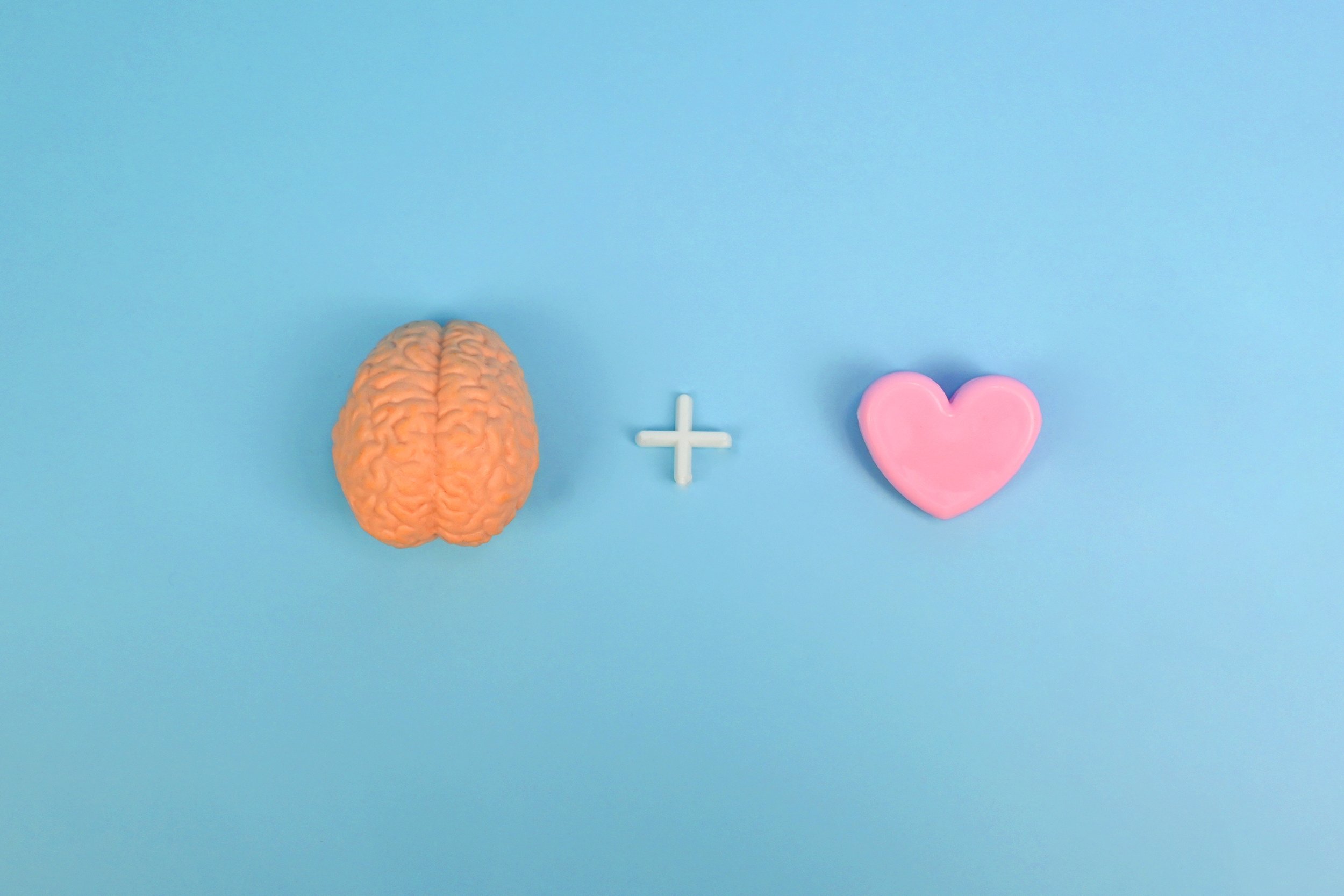Cognitive Rigidity… or Processing Time Needed? - Part 4
“Future it out”
Let’s Review…
This is Part 4 in my series called Cognitive Rigidity… or Processing Time Needed? Through this series, we are working together to change the common narrative of:
My learner is rigid.
to
My learner needs more time to process and integrate new information. It will be better for both of us, for lots of different reasons, if I respect and embrace this aspect of their learning style, by building in the time that they need.
You can check out, or revisit, previous posts in this series to see where we left off:
Part 1: Cognitive Rigidity… or Processing Time Needed?
In today’s post, I’d like to talk about allowing for processing over a longer period of time. Our learners are not always ready for a new idea or new way of doing something right away, or in the moment that we introduce it. They truly need a little bit longer to process and integrate the new “information nugget” into their greater understanding and experiences of the world. Think: hours, days, weeks, or even more.
Importantly, the skill we are trying to help develop, or foster, will take off in a more positive way, if we simply respect their unique processing stye, and embrace it (rather than fight it).
A connecting and meaningful way to describe the process we are going to get into is:
“Creating a future narrative together, over the course of time.”
And, as a strategy, I’ve created this phrase for myself: “Future it out.”
Future It Out
To “future out” an idea means we enter the engagement with the future, not the present, in our focus. Our seemingly small but important goals are to:
Introduce the new idea (“information nugget”) in a very general way, and at a time that our learner is ready to hear it (You can read example cues from Part 2 that help determine “readiness”, and iniitate the engagement using declarative statements from Part 3).
And then, make a plan with your learner to revisit, or come back to, that idea together, at a set point in the future (i.e., after they have had time to fully process the information).
Plan Ahead to Circle Back
“Revisiting” in the near future may consist of actually doing that thing (taking action), or it may simply consist of further exploring the new idea together.
When we get in the practice of planning ahead to circle back in this way, and then follow through on our ‘revisiting”, we create a wonderful, shared narrative, that steadily develops at a pace that is manageable to our leaner. It is really cool to be a part of this process!
Let me share a personal example, so you can see how “futuring-it-out” can unfold.
I work with an adult client whose defenses go up automatically and quickly whenever a new idea is introduced. She most certainly needs more time to process and integrate new information. I have learned over the years that if I try do something before she is ready, she gets upset, disengages, or shuts down (fight/flight/freeze responses).
But, when I enter or initiate engagements with her, with the consistent intention of allowing her the time she needs (or, consistently giving her the grace of time), our connection strengthens and she builds trust in me. She knows I will not overhwlem her, and that my communication will support her ability to self-regulate. As a result, new ideas, new ways of thinking, and new skills develop steadily, and beautifully, at a pace that is manageable to her.
Below is an example of our dialogue, with my comments and observations in italics.
Me: “Kris, I have an idea that I’d love to share with you.” (This is a strategy discussed in Part 3)
Kris: “What is it?”
Me: “I think it would be really fun if, when we go for our walk, we go a different way so we can explore a new part of this path.”
Kris: “No thank you. I don’t want to do that.”
Me: “It doesn’t have to be today. I just mean someday.” (I future-it-out because, although I think she will like the new idea once she does it, I can see she is not ready for it.)
Kris: ….(thinking)…. (I do not expect her to say yes yet. I simply acknowledge, silently, that she has not said, “no.” Note to self: If I take it slow, her openness to this idea may grow.)
Me: “I’d love to share more with you about the path. I can share it now, or I can share it next time we see each other.”
Here I am inviting her to share what she needs (self-advocate), and this information will guide my next communicative turn.
Specifically, is my next information nugget manageable to her now? Or is it too much, and I should save it for later?
Kris: “What is it?” (She lets me know she is ready for a ilttle bit more information! I talk about the cues that indicate “ready” vs. “not ready” in Part 2.)
Me: “I’ve learned that if we go this other way down the path, we will see a lot of birds and other nature that I think you will like…. So, maybe someday… we can explore it.”
Here I am sharing information that I know is important to her, based on my knowledge of and relationship with her.
And I am communicating that the decision of what to do, and its timing, is hers to make, not mine.
Kris: “…Okay. But not today.” (She is open, but not yet ready. I respect and accept this in the moment, supporting her self-advocacy skills. And now we can look towards the future together.)
…A Date in the Near Future…
We revisit the topic a week out.
Me: “Kris, I’m remembering something that I’d like to share.” (Part 3 strategy again with declarative statement to recall our shared episodic memory)
Kris: “What is it?” (She is ready, Part 2 cue)
Me: “Well, I remember last time we talked about going down the path in a different direction because there are birds and other nature there that I think you would enjoy.”
I am consciously circling back to the information I previously shared, activating both of our episodic memories, and, supporting our narrative around this topic to continue.
Me:… (quiet for a few seconds to allow Kris time to process what I have said)
Kris: (Looking away)
I have learned this action is one of Kris’ cues that she is “thinking.”
Everyone’s cues are different, and it’s important to identify what it looks like when your learner is thinking (Part 2), so you can be quiet in those moments, and protect that space.
Me: (noticing that she is now orientling her body towards mine) … “I’m wondering if you feel ready to give it a try today….?” (Again, I am inviting her to engage in that new idea now, or to advcate for more time.)
Responses can vary here, depending on how Kris feels, and I want to walk you through two variations.
Example 1 response:
Kris: “Yeah! I’m okay doing that today!”
Me: “Great! I’m looking forward to it too.” (And, off we go!)
Or
Example 2 response:
Kris: “No… not today. I’m not ready.”
Me: “No problem, we can keep thinking about it revisit another time.” (I honor her self-advacoy and future-it-out again).
…Another Date in the Near Future…
I take step back to decide whether this opportunity is important to come back to. I want to always honor Kris’ communication, while also supporting her to grow in ways that will be meaningful to her. In this particular example, I decided it was important to circle back because I knew Kris would enjoy exploring the path, once she felt comfortable.
But, I also suspected that the uncertainty of that path did not feel manageable to her. So when we revisited the idea again, I brought a little more information that I thought might help.
Me: “I was hoping to talk a little bit more about the new part of the path, because I have a little more informaation to share with you about that.”
Kris: “What is it?
Me: “I printed a picture of the path from an aerial view, so you can see exactly where it goes. I can show you.”
Kris: “Yeah! I’d like to see that.”
Me: “Here is the picture. This is where we usually go, and this is where I’d like to go…. over this way.”
Kris: “Oh yeah! I know where that is!”
Me: “So, might you feel comfortable giving that a try next time?”
Kris: “Yeah! I’d like to try that next time.”
Me: “Great! I’ll help us both remember.”
In essence, it took three meetings for Kris to feel comfortable taking action on this new idea.
Once we met up the next time, she was ready to go, and we now go that new way on the path regularly (and she loves it!).
But, I needed to ease in to the new idea, give her time to get used it (i.e., in Piagetian terms: give her time to assimilate, accommodate and equilibrate), offer additional information to clarify parts that she may have been feeling unsure of, and circle back!
Tying it all together…
When I met Kris almost 10 years ago, her perceived “rigidity” was a strong force because novelty and change felt scary and unsettling to her. As I have gotten to know her, I have embraced her processing style. I learned how to introduce novetly and/or change at a pace that is manageable to her, using her in-the-moment cues as my guide.
Surrounded by family and a team who also understand and support her in this way, her world keeps getting bigger, and her thoughts are becoming increasingly dynamic and flexible. She is most certainlty open and interested in new ideas, perspectives, information, and experiences, and she continues to grow in new ways every day.
We didn’t get here overnight, but we did get here, because we have been able to looks towards the future with her, versus get stuck in the now.
Future it Out! Handout
Here is this process all in one place!
Your turn (…when you are ready, of course!)
Whatever new idea you may want to introduce to your learner, focus gently on the future with them, one information nugget at a time. It may seem as though it takes a little longer to get where you are going, but isn’t the journey where growth happens anyway?
And, as you stay in tune with your learner’s processing style, you will arrive at your shared destination, both feeling equipped and ready for whatever is next!
Has this series been helpful to you? Have you started to try out any of these ways of thinking or strategies yourself? I’d love to hear about it!
Have a great week!
Learn from the best experts in this FREE summit to help your kids reset their screen time to avoid negative health impacts like anxiety, depression, craving or loneliness.
Sunday Snippets of Support
If you like them, you can receive them directly to your inbox here!














